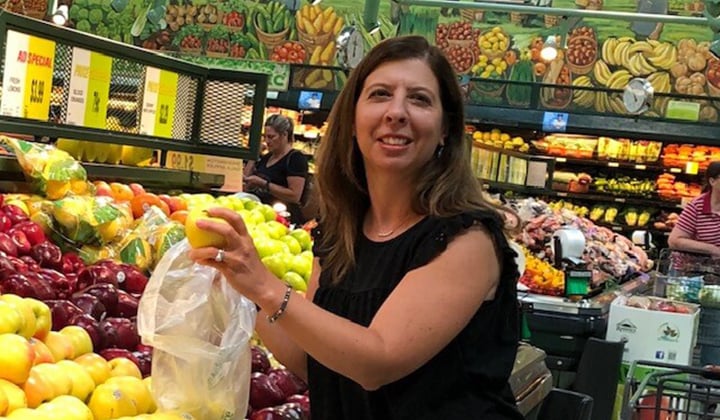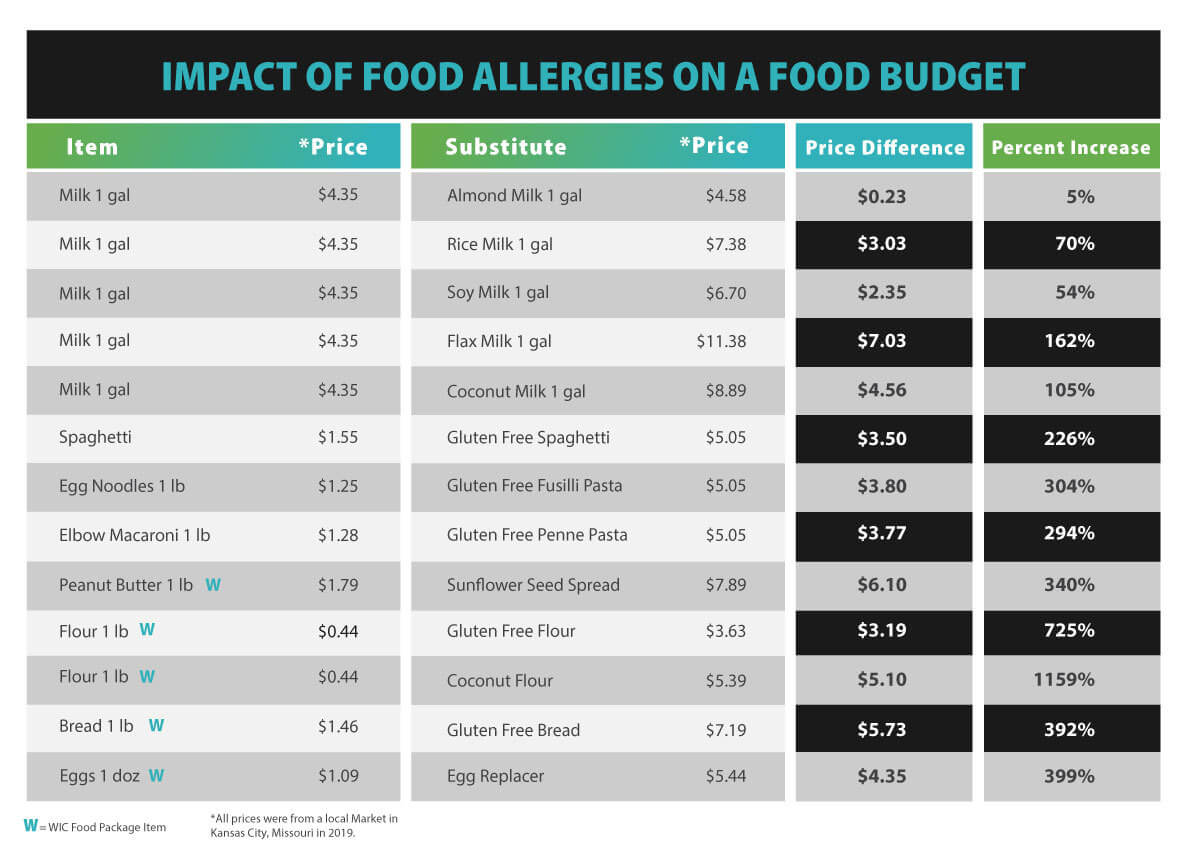
I have always tried to be a money conscience shopper, but have never been on a fixed budget. Like many people, I went to the store and grabbed items on my list – never thinking twice if I could afford the food that I desired. But, that all changed after I accepted the challenge to live off just $4.50 a day for five days.
You may have heard about it before. It’s called the SNAP challenge and it’s a yearly event to raise awareness about hunger and food insecurity in America and the difficulties of living on a fixed income. (SNAP, which stands for supplemental nutrition assistance program, was previously known as the Food Stamp Program and $4.50 is the average allowance per person, per day.)
The rules were simple. You couldn’t go over your budget, someone couldn’t buy or give you food and you couldn’t eat any food you purchased before the challenge, except for condiments. To make things more challenging, I was asked to participate with multiple food allergies to understand what it was it like for my patients with food allergies. So, I participated in the challenge as if I had several allergies, and removed wheat, milk, eggs (partially cooked) and peanuts from my diet.
I’ll tell you right now, I failed miserably.
The hunger pains
The first day started out great and I thought, I can do this. I ate a gluten-free bagel and banana for breakfast, and gluten-free pasta and vegetables were on the menu for lunch. But then came dinner, and that’s when it started to go downhill. My family was having hamburgers and it sounded good, but I couldn’t eat the bun (no gluten) or cheese (no dairy) because of my dietary restrictions. Due to my limited budget and poor planning, I ate a hamburger patty dipped in ketchup and that’s all I had. I went to bed hungry.
The next day was a repeat. Breakfast and lunch were satisfying and dinner was another hamburger patty dipped in ketchup. Another night that week, I had a plain piece of chicken for dinner. There’s just not a lot of variety when both your diet and finances are limited. Again, I went to bed hungry and my thoughts turned to when was it time to eat again.
Falling off the wagon
Mid-week I fell of the wagon because of two work commitments in which meals were provided. I would’ve gone over my food budget if I had to pay for my meals, but I kept my dietary restrictions.
The work dinner was for a group of allergy professionals around the metro, but I couldn’t eat the meal provided. I told the waiter I couldn’t have milk, eggs or wheat. My only option – meat once again (and a side of vegetables). Even dessert was off limits. I felt excluded, because I couldn’t eat what everyone else was having. I felt burdensome, since the restaurant had to make a special meal for me.
My colleagues were shocked when I told them I could only spend $4.50 per day. They said it was impossible, yet this is the reality for many families. It’s estimated 5,000 children in Kansas City have a food allergy and live at the federal poverty level according to census data overlaid with Robert Wood Johnson Foundation statistics.
The challenges of the challenge
This was way more difficult than I anticipated. I was on the verge of tears when I was in the grocery store and realized I had run out of money. I couldn't buy everything on my list that I had planned to eat that week. I wanted to give up after two days, but I pushed on.
Allergen friendly food is very expensive and the financial restraints made this very hard. On the flip side, there are many food choices on a limited budget, but often are not the healthiest options available. I felt the financial challenges were harder than the food restrictions. You can find gluten-free and dairy-free options in the store, but it’s nearly impossible to afford when you’re on a limited budget. I was going to buy sunflower seed butter for the protein, but it was $6 a jar. That was a day and half of my funds! I could’ve splurged, but then I wouldn’t be able to afford the bread, so what was the point?
(Just take a look at this price comparison chart provided by the Food Equality Initiative and you can see how your grocery bill can quickly add up.)

My biggest takeaways
Going from a diet where I could eat anything to living on a restricted diet with limited funds was life changing. You need to plan, plan, and then plan some more. To be successful, I needed to shop the sales better, plan out my menus, use coupons and buy in bulk instead of prepackaged items when possible.
I also have a new perspective on health care because of this challenge. I've been in health care as a nurse and nurse practitioner for 20 years and have treated patients with diverse economic backgrounds but did not consider the financial burden of out of pocket expenses. I’ve always approached my management of food allergies from the clinical side with a focus on teaching avoidance and how to be safe, but rarely the economic challenges outside of the clinic.
In health care, it’s common to offer patients financial assistance with medicine, but what about food assistance? We’re very fortunate to have resources in Kansas City that we can offer our patients, such as the allergy-friendly and gluten-free food pantry spearheaded by the Food Equality Initiative.
Kids shouldn’t have to go hungry. Think how hard it would be to go to school or participate in extra-curricular activities or sports on an empty stomach. Food plays an essential role in our growth and wellbeing and sometimes we take that for granted. I would encourage everyone to try the SNAP challenge themselves. It really is eye opening.
Learn more about the Food Equality Initiative allergy-friendly and gluten-free food pantry.
Learn more about the Multidisciplinary Food Allergy Clinic at Children’s Mercy.

